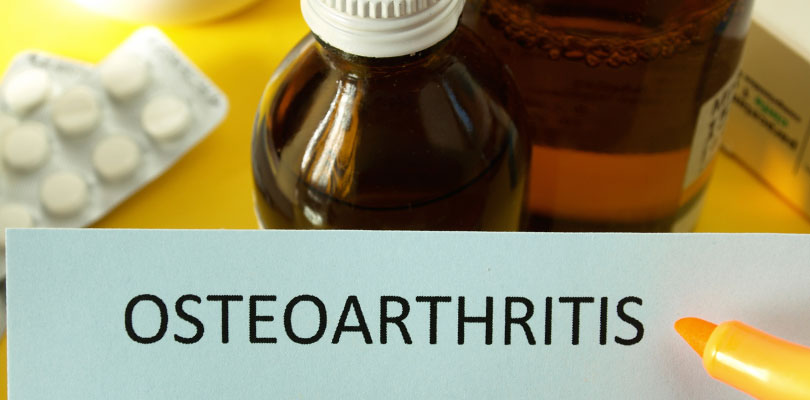Photo Credit: alexdans / iStockPhoto.com
The Symptoms and Development of OA
Osteoarthritis (OA) is a progressive condition that usually develops over decades. By the age of 60, six to eight out of every 10 people develop arthritic changes. Fortunately only one-half of the people who have arthritis are significantly affected by the pain and debility they experience.
Signs and Symptoms of OA
Classic signs of OA are pain, stiffness and decreased mobility, and it may affect one joint or many. It is most common in the weight-bearing joints of the knees and hips, as well as the hands and spine. It is not as likely for the elbows and shoulders to be affected.
Unlike rheumatoid arthritis, OA does not usually affect joints on both sides of the body equally. For example, with OA you may experience joint changes in your right hand if it has been routinely subjected to more wear and tear, but you wouldn’t see the same changes in the left.
Pain felt with OA is a result of swelling and irritation of the tissues that surround the joint, not the bones themselves. It is usually worse with weight-bearing or movement of a joint, but decreases with rest.
Stiffness is often more pronounced in the morning, but will ease up with movement. Pain and stiffness are worse if the weather is damp, when low pressure systems are present in the atmosphere. Joints may also make grating or popping sounds when in motion.
Nodules, hard lumps of bone, may develop on the finger joints, most commonly among women. The nodules are more likely to form on the finger joints furthest from the base of the fingers. Severe OA may cause partial joint dislocation and visible deformity.
OA of the Hip
OA of the hip is a common cause of disability, and is more common in men than women. With OA of the hip, sitting is painful, a decrease in range of motion occurs, and pain may be severe.
It may be felt in the hip, buttock, thigh or knee, and the leg may even turn inward. Hip replacement surgery is needed if the disease is advanced.
OA of the Knee
OA of the knee is most common in women. Knee replacement surgery may be needed in some cases, followed by intense physical therapy. Joint replacement surgery may need to be repeated after several years.
Obesity is a major factor in the development of arthritis of the knee. Maintaining a healthy weight is very important in preventing this type of arthritis.
Spinal Arthritis
Pain, stiffness and degeneration of the discs of the spine can be very debilitating. A wide array of treatment options are available, however many people get minimal relief despite recent advances in therapy.
While a loss of motion, stiffness and pain are the most common results of OA of the spine, dizziness, headaches, balance problems and visual changes may arise.
What Causes OA?
There are two types of OA: primary and secondary. With most common type, primary OA, the cause is typically unknown.
Secondary OA, however, develops as a result of trauma. For example, if you sustain a fracture of a joint at any time during your life, that joint is more likely to develop arthritic changes. Secondary OA may arise while you are very young. Other causes of secondary OA include congenital joint deformities and infections within the joint.
Who Gets Arthritis?
You may be more prone to developing arthritis if you work at a job that stresses your joints. For example, loggers and construction workers are prone to arthritis because of the severe, chronic strain on their joints.
Arthritis often runs in families, but diabetics and people with hemophilia have higher than normal risks of developing arthritis. Inflamatory diseases, such as septic arthritis, increase your chances of developing OA. Studies indicate obesity and regular drinking of beer may raise the likelihood of arthritic changes occurring, particularly within the knees.
How Do Arthritic Changes Develop?
Cartilage, a connective tissue lining the joints, breaks down. The joint surfaces become irregular and painful; damage arises within the joints and surrounding tissues; the space within the affected joints narrows; bony protuberances develop.
Cartilage is smooth, white and moist. As arthritis develops, the cartilage begins to turn yellow, dry out and get thinner. As a result, the space between the joint surfaces gets smaller and pieces of the cartilage may tear and become detached from the bone.
The inner membrane that lines the joint becomes inflamed and breaks down, so the bone loses its protection. Surfaces formerly protected from injury begin to rub against each other and uneven surfaces develop. Abnormal bone growth occurs and develops where ligaments and tendons attach to your bones.
Why Does Cartilage Break Down?
Your joints contain a liquid cushion called synovial fluid. Acid in the synovial fluid may cause cartilage to break down over time.
Cartilage does not have its own blood supply; it relies on synovial fluid to provide nourishment. Inadequate nutrition may be a factor in the development of arthritic changes.
What Can I Do To Reduce My Chances of Developing OA?
Drink plenty of water so your tissues do not become dehydrated. Wine may protect the joints from degenerative changes within the knees. Usually hard liquor is linked to negative consequences for the body, but a large study has revealed hard spirits may actually protect hip joints from damage.
Herbal teas containing rosmarinic acid may reduce inflammation and promote joint comfort. Rosmarinic acid is found in rosemary and mints, including spearmint, catnip, peppermint and lemon balm.
The supplement chondroitin may provide small to moderate degrees of relief for sufferers of early stage osteoarthritis. It appears to preserve the space within the joints.
